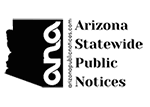Emergency broadband approval will benefit low-income families
Eligible households to receive discount on broadband services
WINDOW ROCK, Ariz. — The Navajo Nation commended the Federal Communications Commission (FCC) approval of the Emergency Broadband Benefit Program to provide low-income families with subsidies for internet service.
Navajo Nation President Jonathan Nez and Vice President Myron Lizer said the action to adopt and establish the Emergency Broadband Benefit Program, which was funded through a $3.2 billion appropriation included in the Consolidated Appropriations Act, was approved by Congress to enable eligible households, including tribes, to receive a discount on the cost of broadband service and certain connected devices during the COVID-19 pandemic.
The program will provide eligible households with discounts of up to $50 a month for broadband service, and up to $75 a month if the household is on tribal lands. It also will provide a one-time discount of up to $100 on a computer or tablet for eligible households.
Vice President Lizer in February participated in a roundtable discussion hosted by the FCC to gather input and recommendations to help with the establishment of the program. He spoke about the vast needs for telecommunications improvements to provide broadband services for families, students, tele-medicine, first responders, and many others.
“The subsidies will be very beneficial for Navajo families who are eligible,” Nez said. “The COVID-19 pandemic has magnified the need for broadband connectivity to meet the needs of our students, teachers, first responders, elders, and others.”
Nez said Lizer’s advocacy during the discussions with the FCC was influential in the FCC’s establishment of the program.
“Under the leadership of Navajo Nation Telecommunications Regulatory Commission Office Executive Director Christopher Becenti and the commission members, our administration continues to advocate for the permanent designation of FCC’s 2.5GHZ spectrum, which was temporarily assigned to the Navajo Nation during this pandemic,” Nez said.
Through CARES Act funding, the Navajo Tribal Utility Authority completed 139 broadband installations and capacity upgrades to existing broadband equipment and constructed four new broadband/cell phone towers.
In February, the Nez-Lizer Administration also announced that Navajo Nation secured $53 million in funding through the Federal Communications Commission’s E-Rate Program, to install over 600 miles of fiber optic lines that will expand internet capacity for 90 chapter houses and 53 Head Start facilities on the Navajo Nation.
“Our administration is working together with many partners and we are making great progress in expanding broadband coverage for our Navajo people,” Lizer said. “I appreciate the FCC members for hosting the roundtable discussion and incorporating our input into the creation of the Emergency Broadband Benefit Program.”
“The Commission’s Lifeline program provides qualifying low-income households discounts on voice or broadband Internet access service, as well as on bundled service,” according to the FCC website and said Consumers can qualify for the Lifeline program by participating in a qualifying assistance program (i.e., Medicaid, Supplemental Nutrition Assistance Program (SNAP), Supplemental Security Income (SSI), Federal Public Housing Assistance (FPHA), or Veterans and Survivors Pension Benefit) or by having an income at or below 135 percent of the Federal Poverty Guidelines.
“Residents of tribal lands can also qualify for the Lifeline program by meeting the aforementioned criteria or by participating in a qualifying Tribal-specific federal assistance program,” the FCC website said.
The Nez-Lizer Administration continues to work together with local, state, and federal partners to increase broadband opportunities for the Navajo Nation. More information about the FCC’s Emergency Broadband Benefit Program is available by visiting https://www.fcc.gov/broadbandbenefit.
Information provided by the Navajo Nation Office of the President and Vice President
SUBMIT FEEDBACK
Click Below to:




